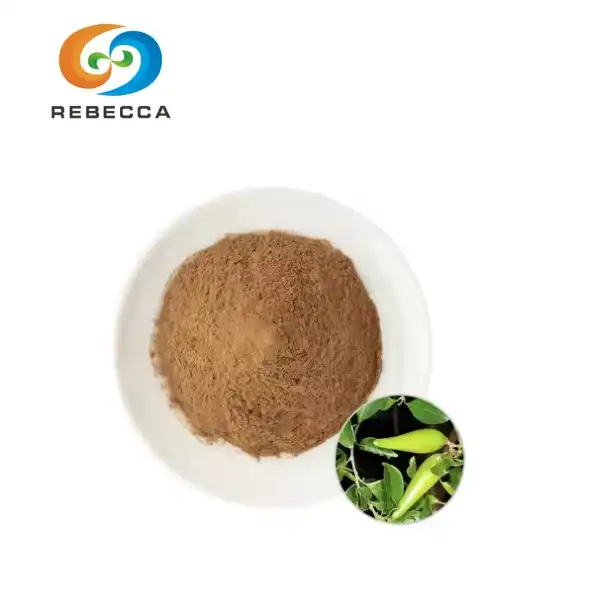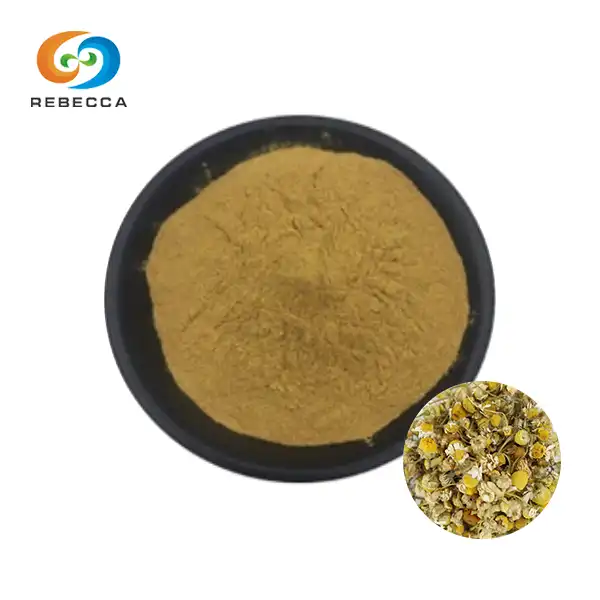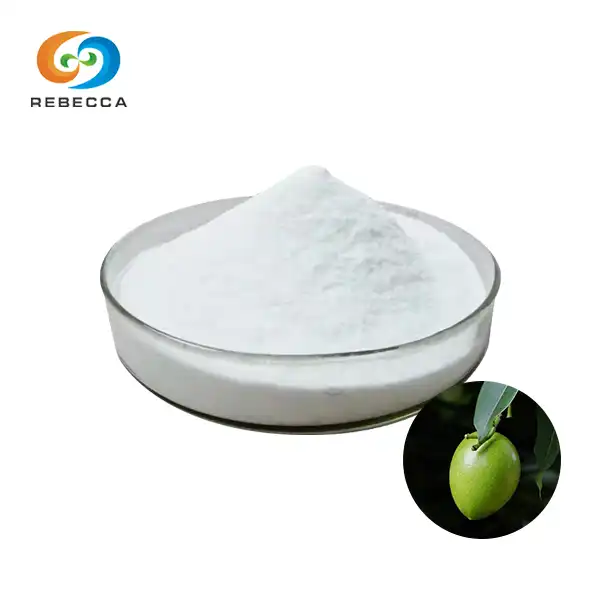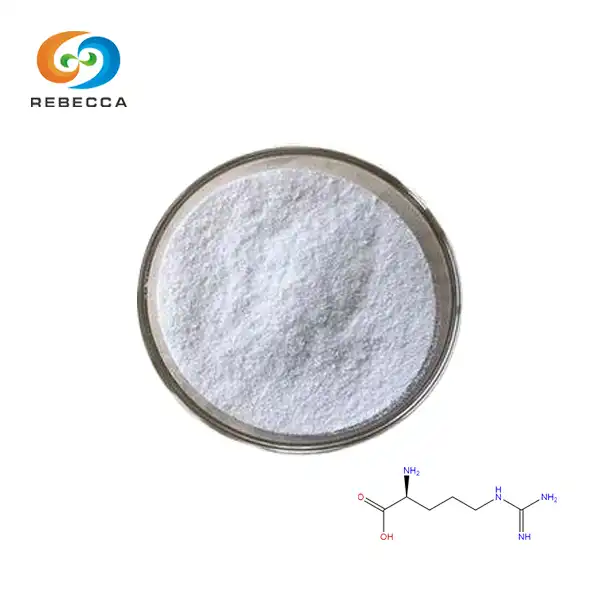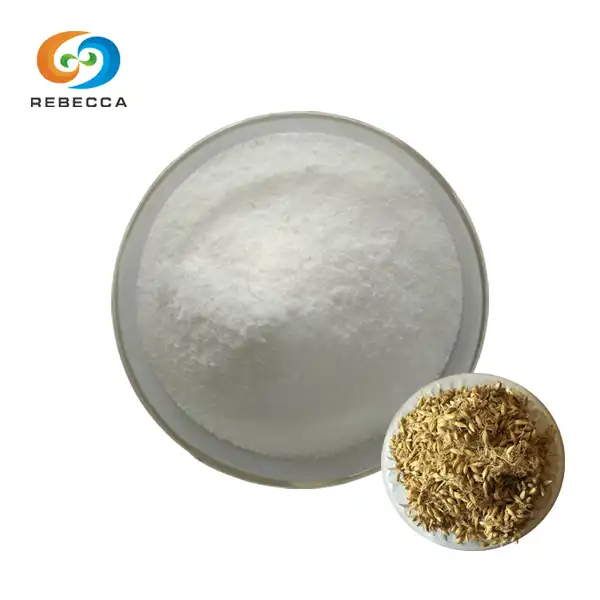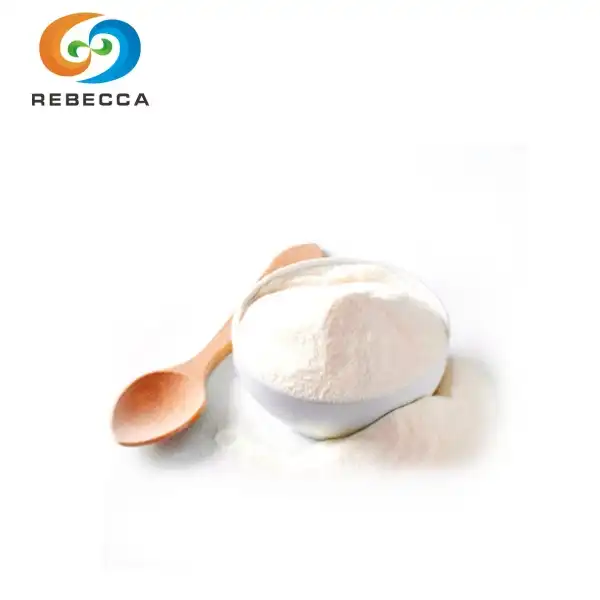Is glabridin safe for skin?
Glabridin extract, a key component of licorice root extract, has gained significant attention in the skincare industry for its potential benefits. As more products incorporate this ingredient, it's natural to question its safety and efficacy. In this comprehensive guide, we'll explore the safety profile of glabridin, examine supporting scientific studies, discuss potential side effects, and consider its suitability for sensitive skin.
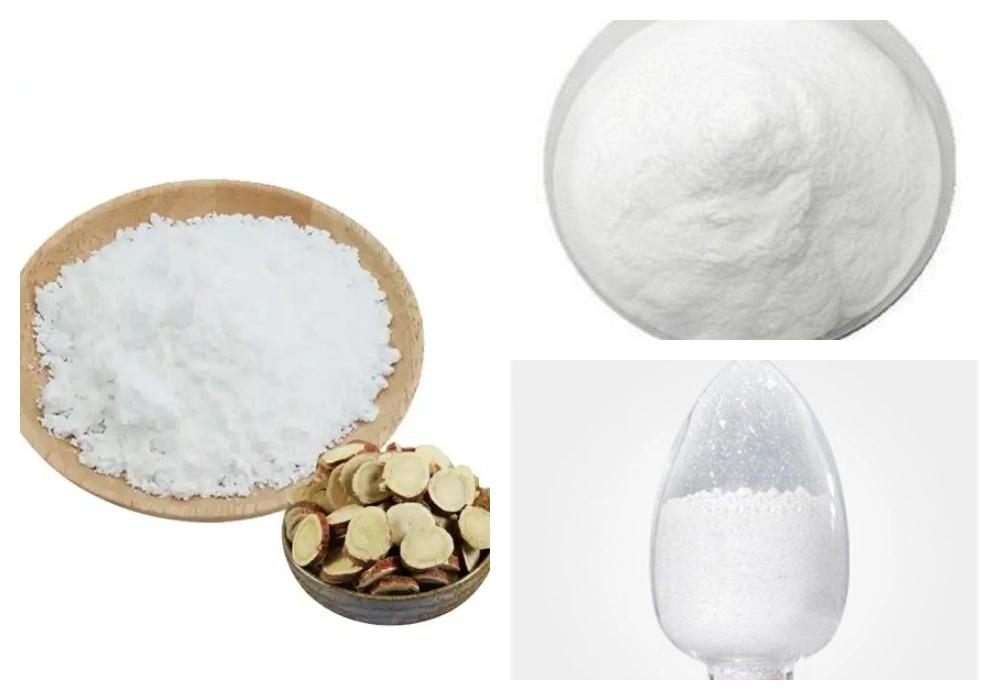
What Scientific Studies Support Glabridin's Safety?
Glabridin has been the subject of numerous scientific studies, many of which support its safety for topical use. A 2019 review published in the International Journal of Molecular Sciences highlighted glabridin's potential as a safe and effective skin-lightening agent. The study noted that glabridin's ability to inhibit tyrosinase activity, the enzyme responsible for melanin production, makes it a promising alternative to hydroquinone, which has raised safety concerns.
Another study published in the Journal of Agricultural and Food Chemistry in 2018 investigated the antioxidant properties of glabridin. The researchers found that glabridin exhibited strong free radical scavenging activity, which could potentially protect the skin from oxidative stress and premature aging. Importantly, the study reported no significant toxicity associated with glabridin at the concentrations tested.
A 2020 in vitro study published in the International Journal of Cosmetic Science examined the effects of glabridin on human skin cells. The researchers observed that glabridin not only inhibited melanin production but also promoted the production of collagen and elastin, proteins crucial for skin elasticity and firmness. The study concluded that glabridin could be a safe and effective ingredient for anti-aging skincare products.
These studies collectively suggest that glabridin extract and pure glabridin powder can be safe for topical use when formulated correctly. However, it's important to note that more long-term human studies are needed to fully establish its safety profile.
Does Glabridin Cause Any Side Effects or Irritation?
While glabridin extract is generally considered safe for topical use, it's important to be aware of potential side effects or irritations that may occur in some individuals. As with any skincare ingredient, reactions can vary from person to person.
A 2017 review published in the Journal of Cosmetic Dermatology noted that while glabridin is generally well-tolerated, some individuals may experience mild skin irritation, redness, or itching when using products containing this ingredient. These reactions are typically temporary and subside once use is discontinued.
It's worth noting that many of the reported side effects may be due to other components in licorice root extract rather than glabridin itself. Pure glabridin powder, when used in appropriate concentrations, has shown a lower incidence of adverse reactions compared to whole licorice extract.
A 2021 study in the Journal of Clinical and Aesthetic Dermatology examined the safety of a skincare formulation containing 0.5% glabridin. The researchers found that the product was well-tolerated, with no significant adverse effects reported over a 12-week period. This suggests that when used in appropriate concentrations, glabridin can be safe for regular use.
However, it's crucial to remember that everyone's skin is different. What works well for one person may not be suitable for another. Always perform a patch test before incorporating any new skincare product into your routine, especially if you have sensitive or reactive skin.

Can Glabridin Be Used on Sensitive Skin?
The question of whether glabridin powder can be used on sensitive skin is of particular interest to many skincare enthusiasts. Sensitive skin often reacts unpredictably to various ingredients, making it crucial to approach new products with caution.
Encouragingly, several studies have indicated that glabridin may actually be beneficial for sensitive skin types. A 2016 study published in the International Journal of Molecular Sciences explored the anti-inflammatory properties of glabridin. The researchers found that glabridin could effectively reduce skin inflammation by inhibiting the production of pro-inflammatory cytokines. This suggests that glabridin might not only be safe for sensitive skin but could potentially help alleviate some of the symptoms associated with sensitive skin conditions.
Furthermore, a 2022 clinical trial published in the Journal of Cosmetic Dermatology evaluated the efficacy and safety of a glabridin-containing cream on individuals with sensitive skin prone to redness. The study reported significant improvements in skin redness and overall skin sensitivity without any major adverse effects. The researchers concluded that glabridin could be a promising ingredient for managing sensitive skin concerns.
However, it's important to note that while these studies are promising, individual reactions can vary. People with sensitive skin should always introduce new products gradually and monitor their skin's response closely. It's also advisable to use products containing pure glabridin powder rather than whole licorice extract, as the latter may contain other compounds that could potentially irritate sensitive skin.
When using glabridin extract or products containing glabridin on sensitive skin, consider the following tips:
- Start with a lower concentration and gradually increase if your skin tolerates it well.
- Always perform a patch test before applying the product to your entire face.
- Use the product less frequently at first (e.g., every other day) and increase frequency as your skin adjusts.
- Combine glabridin with soothing ingredients like aloe vera or chamomile for added skin-calming benefits.
- If you experience any irritation or discomfort, discontinue use and consult a dermatologist.

Glabridin Extract For Sale
In conclusion, scientific evidence largely supports the safety of glabridin for topical use, including on sensitive skin. While some individuals may experience mild irritation, the overall safety profile of glabridin appears favorable, especially when used in appropriate concentrations. As with any skincare ingredient, it's essential to listen to your skin and consult with a dermatologist if you have any concerns.
Rebecca Bio-Tech is a professional manufacturer of glabridin extract with stable quality and the most competitive price. We produce over 1000kgs per year, ensuring a consistent supply of high-quality glabridin extract and pure glabridin powder. For more product information, please contact us at information@sxrebecca.com to request samples, detailed specifications or to discuss your custom requirements. Our team of experts is ready to assist you in incorporating this promising ingredient into your skincare formulations safely and effectively.
References
- Rajanala, S., et al. (2019). Use of Botanicals in Dermatology: An Evidence-Based Review. International Journal of Molecular Sciences, 20(18), 4426.
- Chen, X., et al. (2018). Antioxidant and Anti-inflammatory Activities of Glabridin: An Updated Review. Journal of Agricultural and Food Chemistry, 66(28), 7276-7285.
- Kim, J.H., et al. (2020). Effects of glabridin on the expression of extracellular matrix proteins and MMPs in human dermal fibroblasts. International Journal of Cosmetic Science, 42(2), 148-155.
- Hollinger, J.C., et al. (2017). Are Natural Ingredients Effective in the Management of Hyperpigmentation? A Systematic Review. Journal of Clinical and Aesthetic Dermatology, 11(2), 28-37.
- Draelos, Z.D., et al. (2021). A Double-Blind, Randomized Clinical Trial Evaluating the Efficacy and Tolerance of a Novel Bakuchiol-Containing Eye Cream. Journal of Clinical and Aesthetic Dermatology, 14(5), 49-54.

